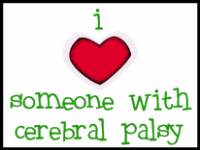
Welcome to Friday Facts! here on the Knowledge Safari blog. Each week we aim to shine the spotlight on a particular segment of special needs in order to raise awareness and provide information. This week we are highlighting Gaucher's Disease.
From Children’s Gaucher’s Research Fund:
Gaucher (pronounced ‘go-shay) disease is a genetic disorder, which results in the deficiency in an enzyme, causing old cells to be stored in areas such as the liver, spleen, lungs, lymph system, and bones instead of being expelled from the body. In more severe cases,which affect young children, they also accumulate in the central nervous system.
What Are Gaucher Cells
The human body contains specialized cells called macrophages that remove worn-out cells by degrading them into simple molecules for recycling. This process is analogous to eating and digesting food. The macrophages “eat” worn-out cells and degrade them inside cell compartments called lysosomes that serve as the “digestive tracts” of cells. The enzyme glucocerebrosidase (pronounced “gloo-ko-ser-e-bro-si-dase) is located within the lysosomes and is responsible for breaking down glucocerebroside into glucose and a fat called ceramide.
People with Gaucher disease lack the normal form of the glucocerebrosidase enzyme and are unable to break down glucocerebriside. Instead, the glucocerebroside remains stored within the lysosomes preventing the macrophages from functioning normally. Enlarged macrophages containing undigested glucocerebroside are called Gaucher cells. This is why Gaucher disease is often referred to as a “storage disease”. Because the enzyme is not working properly, these undigested cells are “stored,” and accumulate in various parts of the body.
People with Gaucher disease lack the normal form of the glucocerebrosidase enzyme and are unable to break down glucocerebriside. Instead, the glucocerebroside remains stored within the lysosomes preventing the macrophages from functioning normally. Enlarged macrophages containing undigested glucocerebroside are called Gaucher cells. This is why Gaucher disease is often referred to as a “storage disease”. Because the enzyme is not working properly, these undigested cells are “stored,” and accumulate in various parts of the body.
What Happens When Gaucher Cells Accumulate
Gaucher cells most often accumulate in the spleen, liver, and bone marrow. They may also collect in other tissues, including the lymphatic system, lungs, skin, eyes, kidney, and heart. Frequently, an organ that contains Gaucher cells becomes enlarged and does not function properly, resulting in clinical symptoms associated with the disease. Providing there is no central nervous system (brain) involvement, Gaucher disease is referred to as Gaucher Type 1. Individuals of all ages can be affected by Type 1 Gaucher disease.
Why Is Gaucher Disease Type 2 and Type 3 More Serious
In Type 2 and Type 3 Gaucher Disease symptoms generally appear in infancy, or early childhood. Unlike Type 1, the central nervous system (brain) is affected. This can manifest itself with abnormal eye movements, unsteadiness, swallowing problems, seizures, among other symptoms. Neuralogical involvement will range from minimal to severe involvement. Central nervous system involvement is significantly more debilitating, and in many cases, causes death.
What Can Be Done
Gaucher patients can receive enzyme replacement infusions (Cerezyme). Enzyme replacement has worked well to control the systemic (non-central nervous system) complications most commonly found in Type 1 patients. However, the replacement enzyme has difficulty crossing the “blood brain” barrier, therefore, in the Type 2 and Type 3 form of Gaucher disease, it has had limited affect on the central nervous system, or brain involvement.
What Research Needs To Be Done
The goal of the Children’s Gaucher Research Fund is to find a cure for Type 2 and Type 3 Gaucher disease. Currently, it is not known why the brain is affected, or how the brain is affected in these children. The first step in our research will be to answer these questions, thus, providing a direction to travel, in an effort to find a cure.
Meet a child and her family, Litte Miss Hannah - who is living with Gaucher's Disease.
--------------
Visit us at Knowledge Safari!































No comments:
Post a Comment